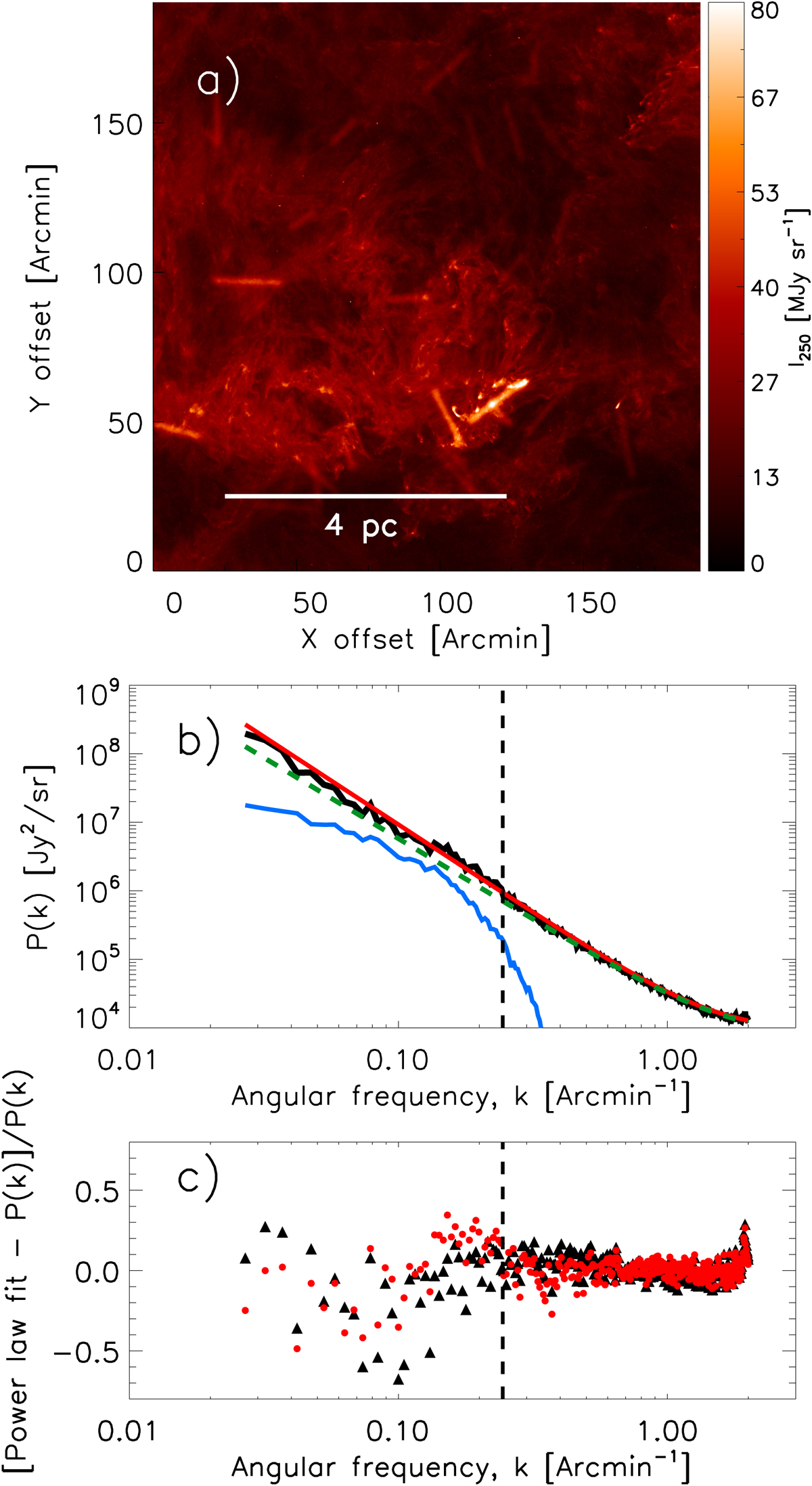Fig. 5.

Same as Fig. 4 for synthetic filaments added to a filament-subtracted image of Polaris obtained with getfilaments (Men’shchikov 2013). The population of synthetic filaments is the same as that in Fig. 4. Panel b: green dashed line shows the best power-law fit to the power spectrum of the filament-subtracted background image of Polaris (with no synthetic filaments), which has a slope of γ = −2.4 ± 0.1. The solid black curve shows the total power spectrum of the filament-subtracted image plus synthetic filaments. The best-fit power-law (red curve) has a slope of γ = −2.5 ± 0.1, slightly steeper than the slope of the power spectrum of the filament-subtracted background image (dashed green curve). The blue curve is the power spectrum of the image containing only synthetic filaments. Panel c: black triangles are the same as in Fig. 3c and the red dots show the residuals between the best-fit power-law model and the power spectrum of the image including synthetic filaments. The ![]() of the residuals between kmin < k < 1.5 kfil is 0.034. The vertical dashed line marks the angular frequency kfil ∼ (0.6/θfil) corresponding to the characteristic ∼0.1 pc width of the synthetic filaments.
of the residuals between kmin < k < 1.5 kfil is 0.034. The vertical dashed line marks the angular frequency kfil ∼ (0.6/θfil) corresponding to the characteristic ∼0.1 pc width of the synthetic filaments.
Current usage metrics show cumulative count of Article Views (full-text article views including HTML views, PDF and ePub downloads, according to the available data) and Abstracts Views on Vision4Press platform.
Data correspond to usage on the plateform after 2015. The current usage metrics is available 48-96 hours after online publication and is updated daily on week days.
Initial download of the metrics may take a while.


